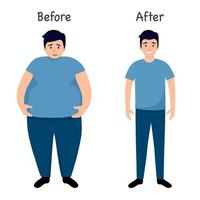HEART PROBLEM'S

Heart problems can refer to a range of conditions affecting the heart’s function and structure. Some common heart problems include:
-
Coronary Artery Disease (CAD): Caused by the build-up of plaque in the coronary arteries, leading to reduced blood flow to the heart muscle. It can result in angina (chest pain) or a heart attack.
-
Heart Failure: A condition where the heart is unable to pump enough blood to meet the body’s needs. Symptoms may include shortness of breath, fatigue, and swelling in the legs and ankles.
-
Arrhythmias: Abnormal heart rhythms, such as atrial fibrillation (AFib), which can cause palpitations, dizziness, or even increase the risk of stroke.
-
Valvular Heart Disease: Involves problems with one or more of the heart’s valves, such as stenosis (narrowing) or regurgitation (leaking), affecting blood flow through the heart.
-
Congenital Heart Defects: Structural issues with the heart present from birth, such as holes in the heart or abnormal connections between heart chambers.
JOINT PAIN

Joint pain can be caused by a variety of factors and conditions. Here are some common causes and related issues:
-
Osteoarthritis (OA): The most common type of arthritis, OA occurs when the cartilage that cushions the joints wears down over time, leading to pain, swelling, and reduced motion. It commonly affects weight-bearing joints like the knees, hips, and spine.
-
Rheumatoid Arthritis (RA): An autoimmune disease where the body’s immune system attacks the synovium, the lining of the joints, leading to inflammation, pain, and potential joint deformity. RA often affects multiple joints, particularly in the hands and feet.
-
Gout: Caused by the accumulation of uric acid crystals in the joints, gout leads to sudden, severe pain, redness, and swelling, often starting in the big toe.
-
Psoriatic Arthritis: Associated with the skin condition psoriasis, this type of arthritis can cause joint pain, swelling, and stiffness, affecting various joints and sometimes causing nail changes.
-
Lupus: An autoimmune disease that can cause joint pain and swelling among other systemic symptoms. Lupus can affect various organs and systems in the body.

Weight problems can encompass both underweight and overweight or obesity issues. Addressing weight concerns involves understanding the underlying causes and implementing appropriate strategies for management. Here’s a breakdown:
1. Overweight and Obesity
Causes:
- Diet: High-calorie, low-nutrient foods and beverages contribute to weight gain.
- Physical Activity: Sedentary lifestyles with insufficient exercise can lead to weight gain.
- Genetics: Family history and genetics can play a role in body weight and fat distribution.
- Hormones: Conditions like hypothyroidism or polycystic ovary syndrome (PCOS) can affect weight.
Underweight
Causes:
- Diet: Insufficient calorie intake or poor nutrient absorption.
- Metabolism: High metabolic rate or overactive thyroid can contribute to being underweight.
- Health Conditions: Conditions like diabetes, cancer, gastrointestinal disorders, or chronic infections can lead to weight loss.
- Mental Health: Disorders such as anorexia or bulimia can affect weight and eating habits.

